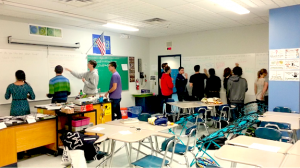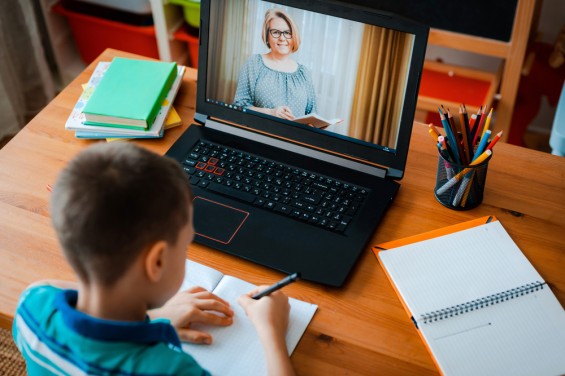
4 ways to cultivate empathy in the classroom

In our fast-paced, digital world, it can often feel like our students are more disconnected from one another than ever before. Four TED-Ed Innovative Educators share tips for how we can combat that by cultivating empathy in the classroom and building perspective-taking skills among students.
#TravelingTuesday: Inspire an overall LOVE of learning in your students by connecting them to people and places outside the walls of your classroom or school.
As an educator, one of the most important aspects of my job is to inspire students to love learning, and see learning as something that happens well beyond the walls of any classroom, school or textbook. The best way to achieve this is to model a love of learning for students (which isn’t hard to do if you really LOVE to LEARN), and to provide students with opportunities beyond content area and curriculum to be exposed to other people and places outside of the everyday circle of people with whom they normally come in contact with on a daily basis.
In my class, I have instituted #TravelingTuesday – connecting students each week to people and places outside of the walls of our classroom. We connect via Skype or Google Hangout with museums, professionals and places that students may not normally have the opportunity to visit at this point in their lives. Through this, students in our rural New York school have connected with peers in classrooms as far away as Africa, professionals with the World Food Programme, NASA, MIT Media Center’s Open Agriculture Initiative, the National Park Service and National Geographic Explorers. It is through these connections that students are exposed to new ideas and perspectives which help to break down barriers and build a sense of understanding and empathy among the youth in our world.
Leaning into discomfort: Encourage students to embrace difficult and courageous conversations to build understanding and empathy.
This year has brought up some pretty challenging topics — issues that are making a real impact on students’ lives. Regardless of how we feel as educators, our students are wrestling with their own questions and trying to make sense of what they may hear at home, what they may be taught in school, and what they may see on social media or on television. I believe it is our responsibility to help teach students how to engage in courageous conversations and civil dialogue.
In middle school, we begin with an initial conversation on understanding group norms: How will we make space for everyone’s voice, not cutting anyone off and holding no judgment? We also encourage listening to one another and perspective-taking, trying to understand why they feel the way they do. Finally, sharing is critical: Sharing with no judgement and focusing on the issue, not the person. Students may walk away with their views intact, but they hopefully will at least have a better understanding of why others feel the way they do.
I truly believe that it is hard to carry hate when you hear the humanity of others, if you are truly listening.
Expand collaboration opportunities: Build or modify an activity that asks the students to interact with another student, teacher, parent, or friend outside of their classroom.
In my position as an edtech instructional coach, I bounce between classrooms and help students and teachers on technology-based projects. What I love about it is that I’m in different classrooms and get to work on different projects, content areas and technologies.
Lately, when I’ve been introducing a new tool, I require students to meet one-on-one with my team as technology consultants. These meetings give students the opportunity to showcase their project or product before turning it in, allowing for feedback and suggestions. Since we’re neutral and have no impact on their grade, students are more willing to ask for help and take advice.
This type of mentor/advisor role is something we’re trying to introduce more to help teachers support their students individually. Outside perspective is valuable here since it requires students to share and reflect on their work in a way that anyone can understand, rather than just students and teachers within their class. The goal is to work with someone different as a team and be available for feedback or give a different perspective.
The world is your classroom: Create a class of global literate students that have greater empathy and understanding.
I recommend educators take the following steps to incorporate global literacy and perspective-taking into their classroom culture:
-
Create connections with other classrooms across the globe and listen to their stories.
-
Create or join a global-sharing community (similar to GlobalSpeedChat and other sites). Have an art show, poetry session, share your lunch, views of the environment…anything!
-
Volunteer locally in your own community with a food or clothing drive, or visit a soup kitchen and volunteer to serve/cleanup.
-
Read a book from another country that tells a story.
-
Watch TED-Ed Selects that have stories connected with them. As one of my students put it, look for “true, impactful stories.” The Global Oneness Project has a lot of these.
-
Have a cultural diversity assembly or day in your school. We do this every 2-3 years and it is awesome!
For more innovative education tips and tools, sign up for the TED-Ed weekly newsletter here >>



